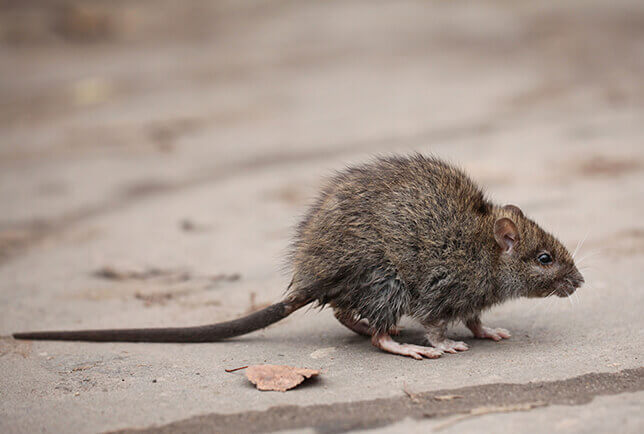Roof rats become sexually mature between two and five months producing four to six litters per year that consist of six to eight young each.
Roof rat belly.
In dense populations these rodents will establish a social hierarchy wherein dominant males mate more than subordinate males.
They also become dependent on certain human behaviors that will allow them to thrive.
Roof rats are usually dark brown or blackish in color with a light colored belly a pointed snout and large furless ears that can be pulled over their eyes.
Step 1 in order to assess the severity of the rat problem and to get a better idea of where to bait and trap you will first need to perform a thorough inspection of the premises.
Their color varies from black to brownish gray with their underside being gray to white.
Brown rat has a more brownish color a more robust build smaller ears and shorter tail less than total body length.
What you ll want to look for are any signs that the rats are present including droppings tracks gnaw marks burrows runways and rodent sounds.
The color of the roof rat varies depending on the sub species and is as follows.
6 5 10 0 inches ears.
Autoplay when autoplay is enabled a suggested video will automatically play next.
They become very dependent on humans for sources of shelter food and water.
5 0 10 0 ounces.
0 5 1 1 inches weight.
12 9 18 3 inches tail.
Their fur is long and coarse and their body weight generally ranges from 5 to 10 ounces 150 to 250 g.
Commensal rodents the term is commonly used to describe rats and mice that live in close proximity to humans living in the structure or in the garden area of the structure.
Rattus rattus is black to slate colored on both back and belly.
The hairs on their belly are always slate colored at their bases and never clear white or lemon colored.
The common lifespan of these rodents is about one year.
And the fruit rat rattus frugivorus rafinesque has an agouti back and white belly.
Rattus alexandrinus is reddish brown back with grayish white belly.
Generally identified by color three sub species of roof rats are known.
Roof rats are smaller and sleeker with tails that are as long or longer than their bodies lighter undersides than norway rats and have proportionately larger ears.
Roof rats are also known as alexandrian rats black rats fruit rats and ship rats.
The alexandrine rat rattus alexandrines geoffroy is brown with gray streaks also known as agouti with a gray belly.
The black rat rattus rattus linnaeus is black with a gray belly.
The roof rat is distinguished by its larger ears pointed nose a tail that is longer than the body and an average body weight of 6 12 ounces.
The belly is grayish to whitish occasionally pale yellow.
They live indoors in attics and upper levels of structures and outdoors in trees and dense vegetation such as tall hedges.

